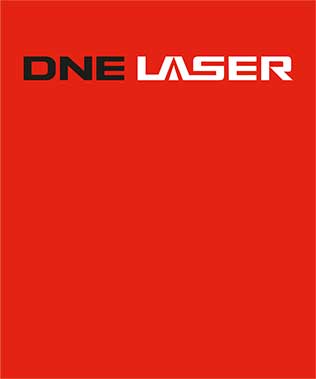Judgment standard for cutting process quality of fiber laser cutting machine
Published:2021-05-20 Browse:90Editor in charge:DNE LASER
Lasers have been widely known in the field of cutting metal materials, but many customers are not clear about how to judge the quality of the cutting process. They can only tell whether the cutting surface is smooth or not. In fact, the cutting process is usually judged from the angle of section roughness, bottom burr, perpendicularity, slit width, etc. Let's take a look at the judgment standards of fiber laser cutting machine cutting process quality.
Judgment standard for cutting process quality of fiber laser cutting machine
1. Roughness of the end face
During the laser cutting process, the auxiliary airflow and working speed will affect the cross section, forming a vertical or inclined line. Deeper lines, the rougher the cross-section, whereas the shallower cross-section, the smoother. The lower the roughness of the workpiece, the higher the accuracy. The cutting accuracy can be adjusted by factors such as laser power, working speed, focal length, auxiliary gas type and air pressure.
2. Burr at the bottom
The principle of laser cutting is that the high-energy laser beam evaporates the metal surface and blows away the slag on the surface of the workpiece through the auxiliary gas. However, in the actual cutting process, due to the mismatch of laser power, working speed, auxiliary gas type and air pressure, some slag will not be washed off after cooling, and burrs will form on the surface and hang on the bottom of the workpiece. In this case, the need for secondary treatment, which is very time-consuming. The burrs and slag on the bottom of the workpiece are very important criteria for judging the cutting quality.
3. Verticality
For the sheet, the degree of vertical laser cutting can be ignored, but when more than 10mm, the cutting edge of the vertical thickness of the material is very important. The laser beam is emitted tapered, away from the focal point, the laser beam becomes divergent, the position of the focal point, the cut surface becomes wider toward the bottom or top of the vertical edges, higher cutting quality.
4. Kerf width
The kerf width is a manifestation of the machining accuracy. It usually does not affect the cutting quality, but only affects the material cost. The kerf width will become an important indicator when a particularly precise contour and pattern need to be formed inside the workpiece. Kerf width determines the minimum inner diameter profile, kerf width is smaller, the more precise profile can be processed, the smaller the hole diameter, which is unsubstituted laser cutting, etc. One of the important advantages of plasma cutting. However, as the thickness of the sheet increases, the Kerf width will inevitably increase. To ensure stable and high-precision cutting, it is necessary to ensure that the workpiece is stable in the processing area of the laser cutting machine.
 Bystronic (Shenzhen) Laser Technology Co., Ltd.
Bystronic (Shenzhen) Laser Technology Co., Ltd.